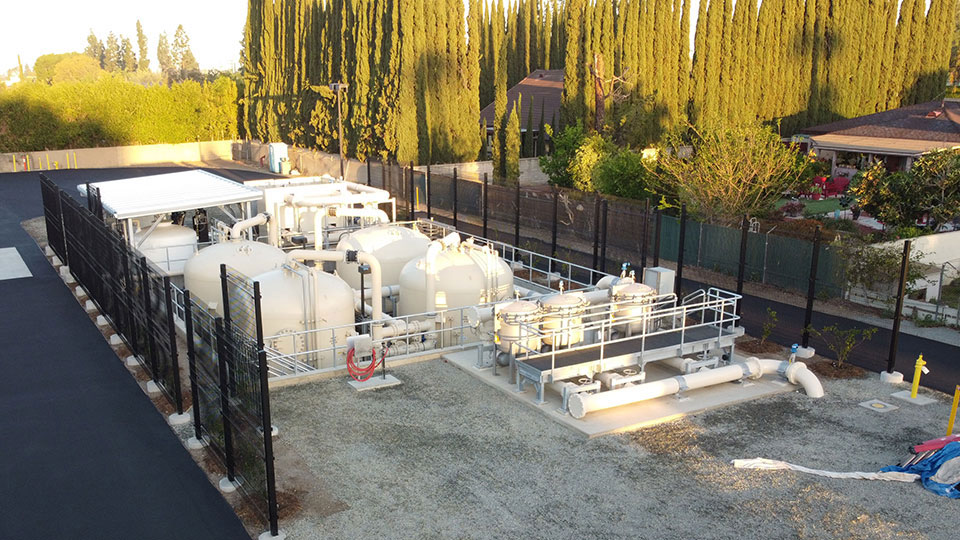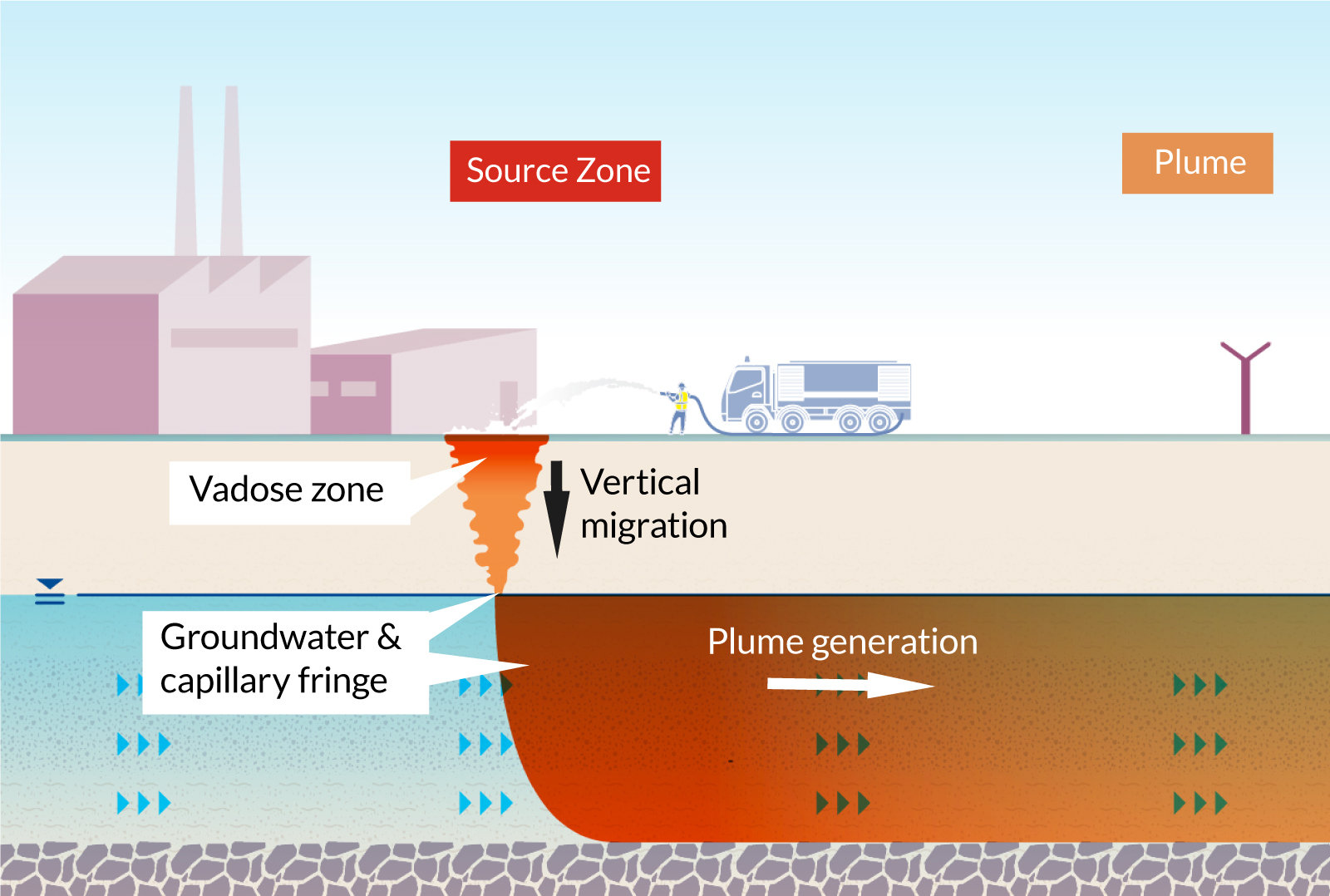Advanced PFAS Management Solutions to Protect Environment
Advanced PFAS Management Solutions to Protect Environment
Blog Article
Innovative PFAS Therapy Solutions for Safer Water
The increasing prevalence of PFAS contamination in water materials demands a vital exam of innovative treatment services. Furthermore, arising bioremediation strategies supply a more sustainable method to dealing with PFAS obstacles. pfas management.
Review of PFAS Contamination
PFAS contamination has become a significant environmental and public wellness problem. Per- and polyfluoroalkyl substances (PFAS) are a group of synthetic chemicals understood for their perseverance in the setting and body, leading them to be commonly referred to as "for life chemicals." These substances have actually been widely utilized in numerous sectors, consisting of firefighting foams, water-repellent fabrics, and food product packaging, primarily due to their water- and grease-resistant buildings.
The widespread usage of PFAS has caused their detection in dirt, water supplies, and also in the blood of humans and pets. Studies have actually connected PFAS direct exposure to countless health problems, including developmental impacts in infants, body immune system disorder, and various types of cancer cells. Additionally, the ecological perseverance of these substances complicates their deterioration and elimination, elevating worries concerning long-lasting environmental influences.
Governing bodies are significantly applying rigorous standards to monitor and lower PFAS levels in drinking water and various other environmental mediums. As recognition of PFAS contamination grows, it has ended up being essential for areas and markets to seek reliable treatment remedies to alleviate exposure and guard public wellness.
Advanced Filtration Technologies
As the necessity to attend to PFAS contamination heightens, progressed filtering technologies have actually become a pivotal part in the remediation efforts targeted at removing these persistent chemicals from water sources. These technologies take advantage of advanced mechanisms to efficiently target and capture PFAS compounds, which are infamously immune to conventional therapy approaches.
One of the most encouraging methods is the usage of granular turned on carbon (GAC), which adsorbs PFAS molecules because of its high surface and porous structure. This approach has been extensively implemented in both metropolitan and industrial setups, showing considerable reductions in PFAS focus. Furthermore, ion exchange resins have actually acquired traction, especially developed to selectively bind PFAS ions from water, therefore promoting their elimination.
Membrane layer filtration modern technologies, such as reverse osmosis and nanofiltration, also reveal effectiveness in PFAS elimination by physically dividing impurities from water - pfas management. These systems can attain high levels of pureness, making them ideal for alcohol consumption water applications
Chemical Therapy Technologies
Countless chemical treatment technologies are being explored to successfully attend to PFAS contamination in water products. One encouraging method involves using advanced oxidation procedures (AOPs), which use effective oxidants such as ozone, hydrogen peroxide, or chlorine dioxide combined with UV light to damage down PFAS substances right into much less dangerous substances. This method has actually demonstrated efficacy in lab setups, revealing potential for scalability in real-world applications.
One more ingenious approach is the development of ion-exchange materials specifically designed to target PFAS. These resins can selectively adsorb PFAS compounds from water, enabling for their elimination throughout therapy procedures. Current advancements have actually improved the effectiveness and ability of these materials, making them a beneficial choice for water treatment facilities.
Furthermore, researchers are exploring using chemical agents like persulfate and ferrous ions to enhance the degradation of PFAS in polluted water. These agents can cause chain reaction that facilitate the failure of consistent PFAS compounds.
Arising Bioremediation Techniques
Recent innovations in chemical treatment innovations have actually paved the way for exploring bioremediation methods as a practical choice for dealing with PFAS contamination. Bioremediation uses the natural metabolic procedures of bacteria to weaken or transform toxins, making it an appealing blog approach for tackling consistent impurities like PFAS.
Emerging strategies in bioremediation include making use of genetically crafted microorganisms that can particularly target and damage down PFAS compounds. These microbial pressures are being developed for their boosted degradation capacities, boosting the efficiency of the removal process. In addition, researchers are checking out the capacity of plant-assisted bioremediation, where particular plant species may uptake and withdraw PFAS from contaminated soil and water.
Another appealing approach is the application of bioaugmentation, which includes presenting beneficial microbes into infected environments to enhance the deterioration of PFAS. This technique can facilitate faster removal timelines and boost total effectiveness.

Regulative Structures and Requirements
A comprehensive regulatory framework is necessary for properly taking care of PFAS contamination and making certain public health protection. The increasing recognition of per- and polyfluoroalkyl substances (PFAS) as toxic wastes has actually motivated different government and state companies to establish requirements that regulate their existence in water supplies. The U.S. Epa (EPA) has established health advisories and is working towards establishing enforceable restrictions for PFAS in alcohol consumption water.
State-level guidelines differ substantially, with some states embracing stricter standards than those recommended by the EPA. These guidelines commonly consist of maximum contaminant degrees (MCLs) for details PFAS substances, tracking requirements, and reporting responsibilities for water utilities. Furthermore, emerging frameworks focus on the removal of infected websites, highlighting the need for effective treatment technologies.

Conclusion
Finally, the growth and execution of cutting-edge PFAS treatment services are vital for addressing the prevalent concern the original source of water contamination. Advanced filtering innovations, chemical treatments, and arising bioremediation methods collectively browse this site offer a complex technique to efficiently reduce and weaken PFAS degrees. As regulatory structures remain to evolve, incorporating these innovations will certainly be vital to protect public health and recover the stability of infected water sources, inevitably adding to a cleaner and more secure atmosphere.
Report this page